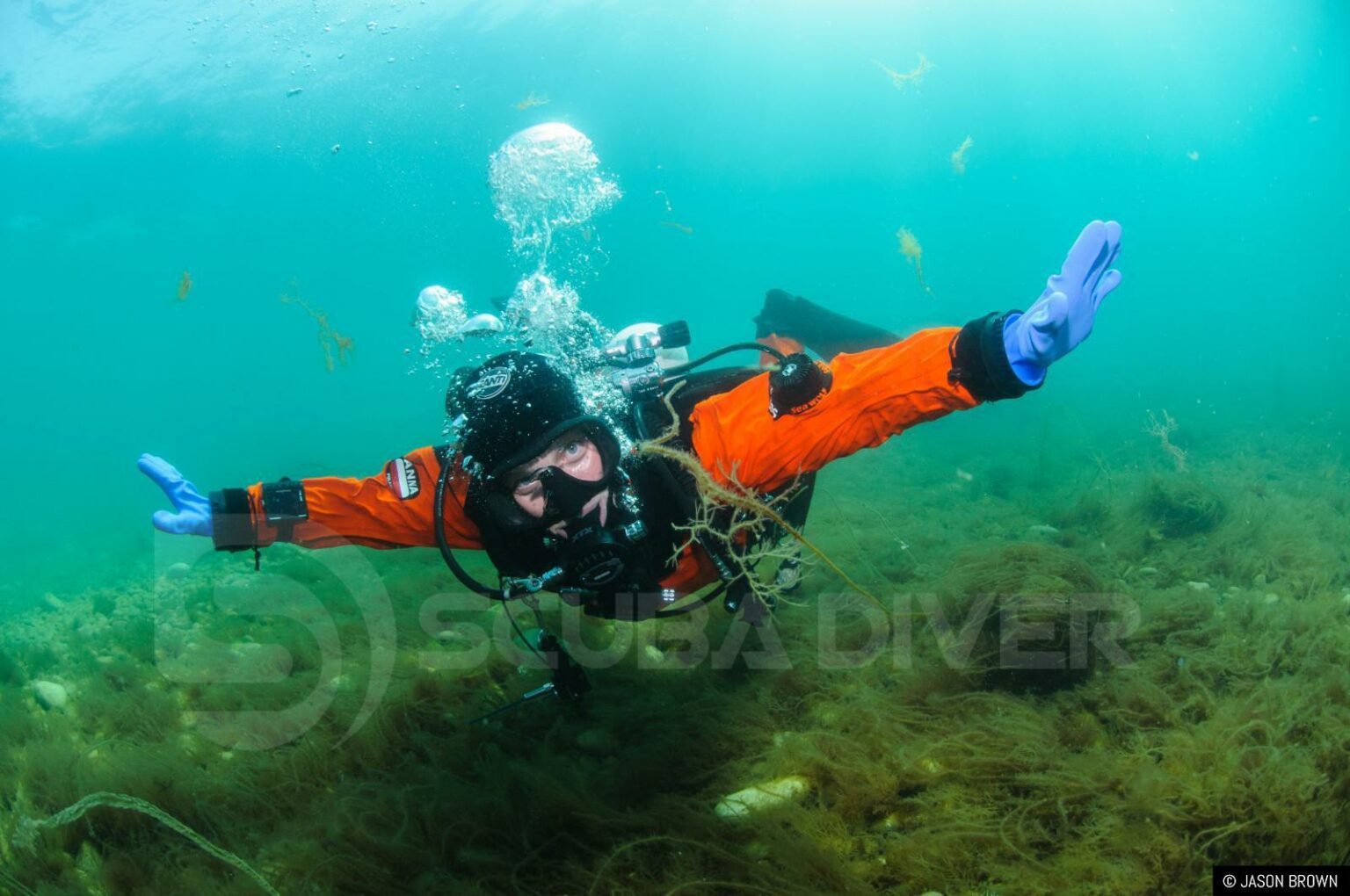This issue, our panel of industry experts offer some useful hints and advice on how best to deal with surge and swells.
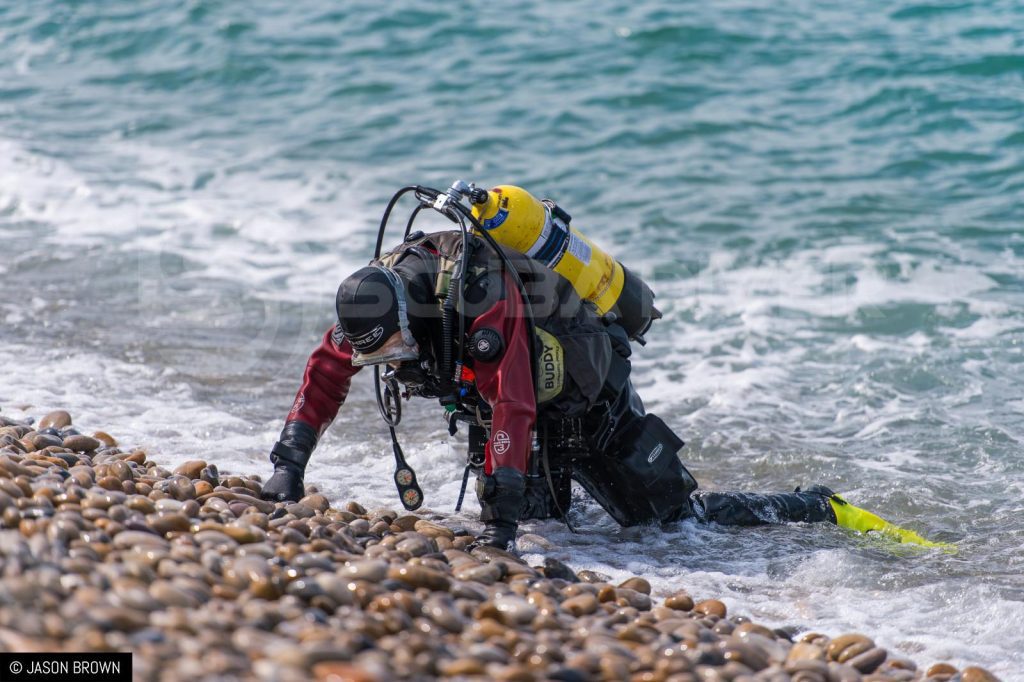
There can be nothing more off-putting for some divers than dealing with a hefty surge and swell on entry and exit, but with the right mindset and technique, if the conditions allow, it can be dealt with safely and you can still have a great dive. The same goes for current – many divers love a drift dive, others not so much, but as long as you have the right equipment and dive skills, it can be no different to pootling along a reef. Our experts offer some useful advice on how best to deal with surge, swell and current.
A spokesperson from BSAC HQ said: “Safety first is the mantra when considering diving in – or finding yourself in – surging waves, large swells or strong currents. If planning to dive in conditions that are ‘a tad lumpy’, then an honest and informed assessment of the conditions to ensure it can be done safely and enjoyably is a non-negotiable.
“Swells are best avoided as the entry/exit can be dangerous, from either boat or shore. But if it’s agreed that the sea state is safely do-able or the current is running at a pace everyone is happy with, then diving the plan is essential.
“It goes without saying that you will need surface cover as you can drift a long way in a tide. Try to make it as easy as possible for them – the skipper/cox’n needs to be aware of your position and the speed and direction of the current, plus planned dive times, so they can monitor and anticipate.
“Try to enter together rather than in waves so the surface cover can track you as a group. Use an SMB to mark your position, or deploy a DSMB right at the start of the dive. If buddy separation is a concern, consider using a two-metre line with a clip on each end to make it easier to find your buddy. Or simply give them a section of your DSMB line to hold. Also, consider taking a surface detection aid just in case something does go wrong.
“To dive in surges or currents you have to be confident in your core buoyancy skills to avoid unplanned ascents or an unhealthy saw-tooth profile. Underwater surges can also mess with your head – just go with it and don’t get fixated on the ‘moving’ bottom, but keep your line of vision ahead and where you want to go.
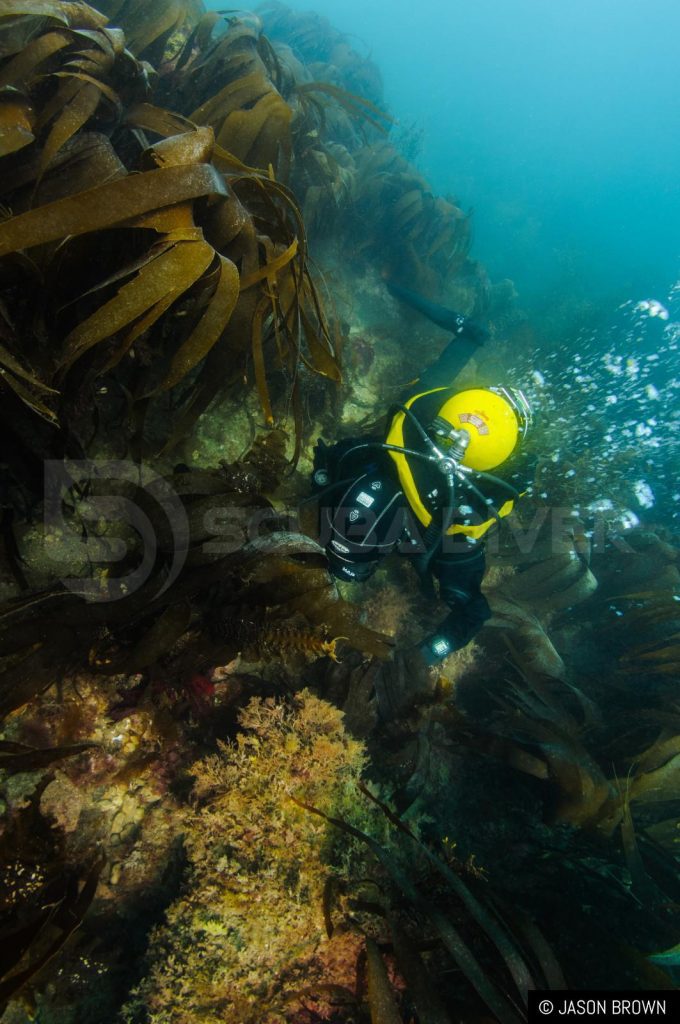
“Anything more than one knot of tide and finning against the current will be exhausting – and will deplete your gas – so if you need to move somewhere, fin across rather than against the current. And if you do need to grab the bottom to hang on or get stabilised, make sure you don’t damage anything or disturb the marine life.
“We all know drift diving can be exhilarating, but it should also be safe and enjoyable. If you get caught in a down-current, fin across it and inflate your BCD. Just make sure you dump the gas when you start to ascend. And always be prepared to bin the dive if the current is faster than expected, or you feel out of control. There will always be other dives.”
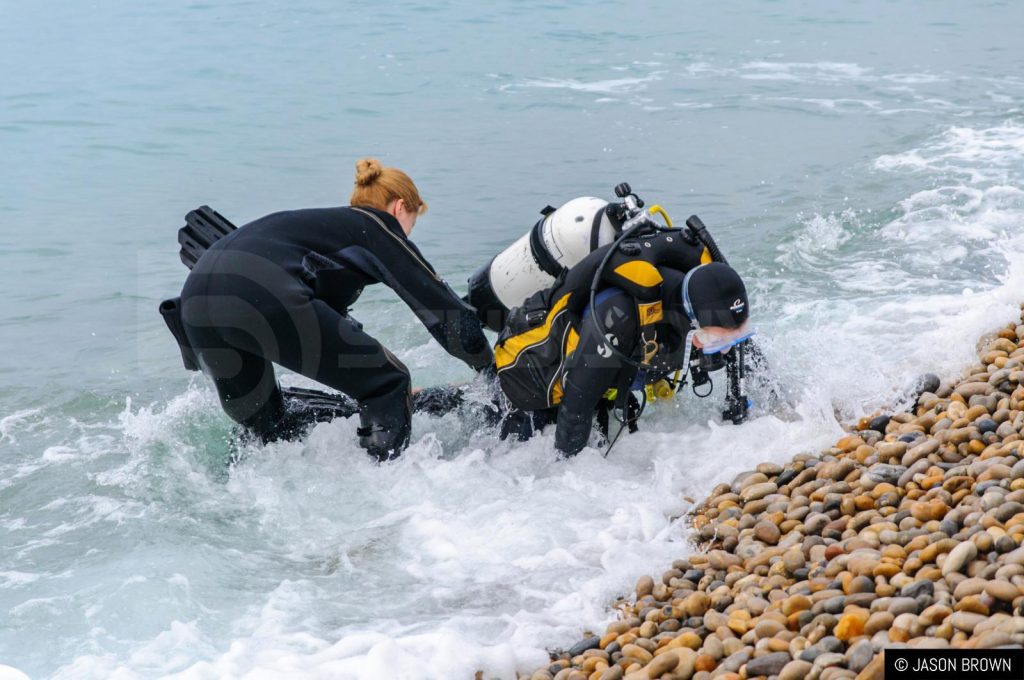
Garry Dallas, Director of Training, RAID UK and Malta, said: “It’s the weekend and the weather is looking glorious for diving! As you arrive at the site, the weather changes slightly, but all looks very promising. There’s no account for experience in our coastal seas, it goes without saying, you must respect them and be cautious when exploring new dive sites.
“Learn about the water movements in our seas from our extensive RAID literature and go diving with someone with more local diving experience. Listen carefully to briefings as you never know when conditions underwater might change. These come in the form of surges, swells, surface/mid/bottom and vertical currents.
“Special attention should be paid to your in-water breathing rate in a current. Over-breathing/exertion is definitely not recommended. Using a shotline is very useful in these circumstances, but if not available, then deploy your SMB or DSMB before you ascend.
“Normally, you’d be neutrally buoyant on your DSMB, but in the case of ‘vertical up/down currents’ it’s safest to be negatively buoyant, providing your bag is full enough to support you from uncontrollable descents and ascents caused by the currents close to shores. The constant taut line and opposite buoyancy characteristics of your DSMB and you create the safest midwater buoy.
“Don’t fight a current, its futile! Swim across and out of it when in a ‘rip current’. Simply go with the flow in a long mid/bottom current, as found when on a ‘drift dive’, the skipper will always pick you up from your DSMB location.
“Mild currents are manageable in the sea when your kicks are efficient and using good fins, but never ever work too hard, monitor your depth, direction and breathing always. Start your dive plan into the current, then drift back.
“Swells, or long period waves, can be nauseous at times, when a body of water moves back and forth, especially when the kelp sways in the opposite direction to you and the floor is stationary! So, focus on your computer, compass, the diver in front (unless they are nauseous) or the underwater horizon and don’t be too close to the floor.
“Enjoy your diving and train to be safe!”
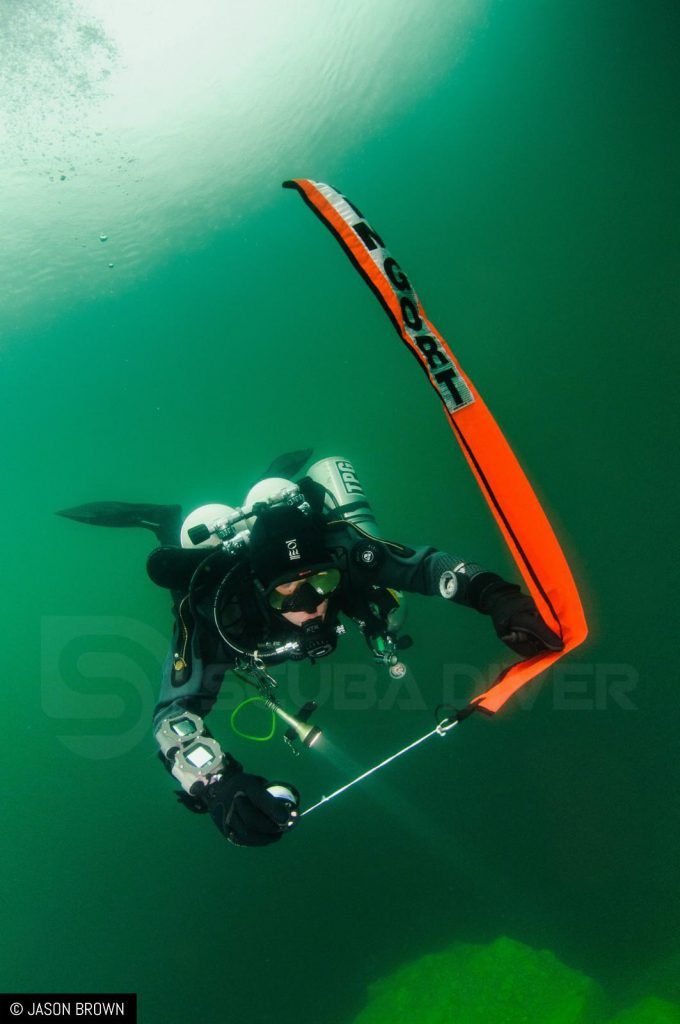
IANTD’s Tim Clements said: “Water is 25 times denser than air – we need to respect that with our streamlining and propulsion when it is still and even more so when it is moving. Dealing with surge and current starts at the planning stage – jumping in and disappearing like washing in a gale is not diving like a pro! Use tidal current and weather resources to work out just what you will face. Ask yourself if you need to minimise water movement, then plan for slack or no waves. However, if the object of your dive requires water movement, for example a scientific study of animals in surge, then you'll need to deal with the movement.
“When you arrive at the dive site, spend some time watching the water patterns – think like a surfer and watch waves sets – use any previous knowledge of the dive site (a no-movement dive is definitely recommended before anything adventurous). Is it getting to be too severe? Talk through with your buddy how you will stay together and complete, or safely abort, the dive if it's all too lary.
“Finally when you get in the water, ensure everything is tucked away neatly and assess what the movement is doing. Understanding the water and anticipation is key – good vis helps for rapid drift current dives – I can recall inadvertently diving the Menai Strait Swellies on Spring ebb in half-metre vis, which didn't go so well.
“Position yourself so that water movement does not carry you into objects and identify any possible lee behind boulders or wrecks that might offer refuge to gather your thoughts or team.
“In surge gullies, watch other floating debris such as kelp fronds to estimate the range of each surge. Allow yourself to move forward and back with the water before finning in and being forced into anywhere narrow.
“Finally, remember that current and surge create some of the most incredible dives – prepare in benign conditions and you'll get more out of the adventurous days.”
GUE’s John Kendall commented: “Water movement causes dives that should be fairly easy to become stressful. The best thing in these situations is not to try and fight the sea, but to be more intelligent.
“Generally speaking, currents will be reduced if you stay in the lee of the wreck, or close to walls/seabed, so think about this when you find yourself being moved around
underwater. Also, having good control of your buoyancy and stability, so you don't feel the need to touch the floor will also help, as any surge currents will simply move you backwards and forwards rather than rolling you around.
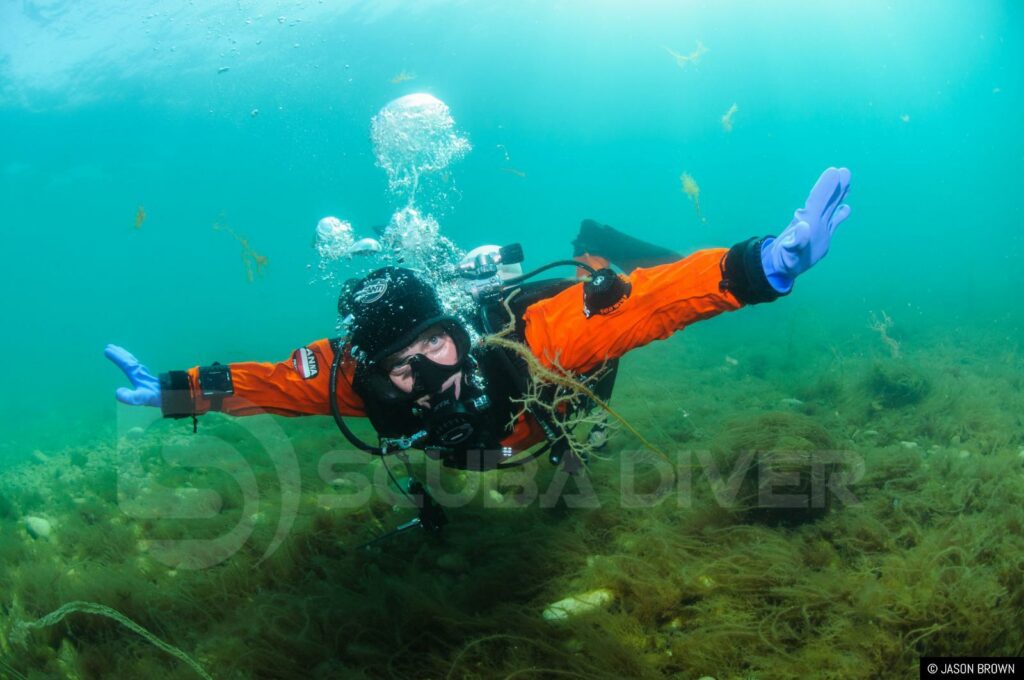
“If you find yourself caught in an unexpected current, and you are struggling to swim against it, then aborting the dive is never a bad idea. Signal to your team, start ascending and then put a DSMB up to allow your top-cover to know where you are and what is happening. With smaller currents, it's often best to start your dive swimming against the flow, so when you turn around to return the flow will help you.”
Matt Clements, PADI Regional Manager UK and Malta, said: “Make sure you are comfortable in your equipment, know how it works and have straps and your gear properly attached. Knowing how to deploy a DSMB is (I consider) a vital skill, you should comfortable using it that when conditions become a tad challenging, getting attention from the surface should not one of them. I used to have to pop a DSMB from depth in a six-knot current with swell while keeping a close eye on those I was guiding, it was/is second nature and could save you a lot of bother.
“Having the right fins can really pay off when trying to move against water movement, but if you are fighting the flow make sure you keep an eye on your rate of breathing as this will dramatically affect your air supply.
“On the surface keep your BCD/wing inflated and your snorkel in as this will save your back gas and keep water out of your mouth. Sometimes the current is that strong you will need to just change your plans and go with the flow but make sure if you are drifting that you have someone on the surface that will be able to pick you up. It is in situations where you are not where you planned that having some form of Emergency Signalling Gear is going to make it easier for a boat to pick you up.”
Emma Hewitt PADI Regional Manager, UK and Ireland, said: “Be sure to do a current check on the surface before beginning the dive and plan accordingly. Stay close to the bottom or wall wherever possible to stay in the lower strength currents. Don’t try to fight the currents or swells, go with them as much as is safe and always look out for the vertical currents.”
Emily Petley-Jones, PADI Regional Training Consultant and Course Director, said: “In certain areas you may encounter surges and swells. When you feel that you are being pushed forwards, then pulled back, it can be tempting for divers to try and keep kicking as much as possible to constantly fight your way though it – but there is an easier way! Only kick as you feel you are being pushed forwards, and relax as you are pulled back. This will mean that you won’t use all your energy as quickly, and will help keep you relaxed and therefore use less air.”
Vikki Batten, PADI Examiner and Training Supervisor, commented: “Learn how to use your fins to coast the currents, surf the swells and sidestep the surge. I remember my Dad asking how I seemed to be moving against the current without even finning. In fact, I was just making the most of two different areas of water movement to go where I wanted to without any effort. It takes time, but advanced finning techniques allow you to use the water rather than fight it.”
Photographs by Jason Brown / bardocreative
Want to read more blogs?
